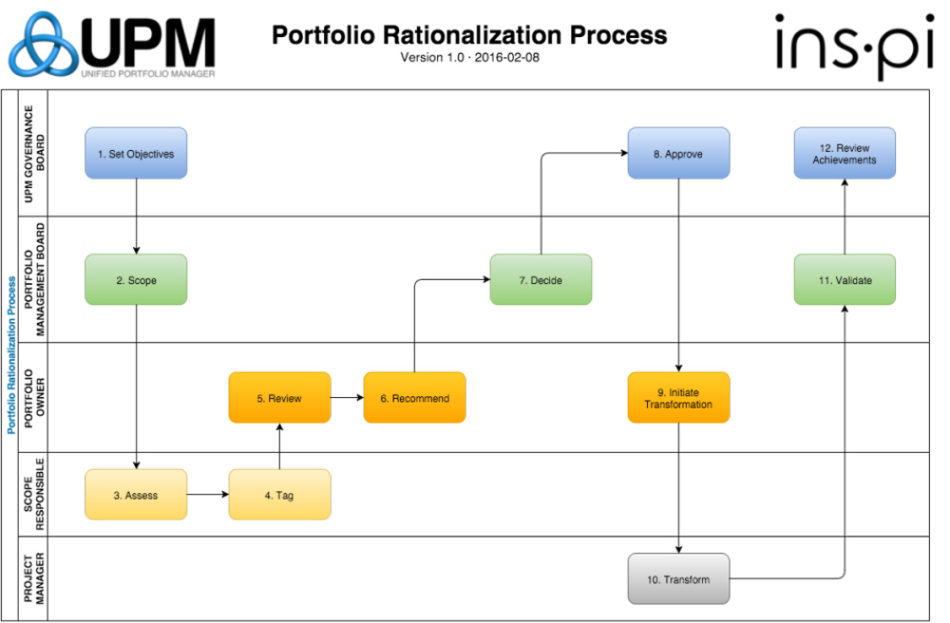It is interesting how certain topics just never seem to grow old and remain interesting – like speaking about the weather. Topics like these even exist in architecture. Application Rationalization is exactly that kind of topic. How many years have we spoken about this, gone to conferences, symposiums, webinars and read hundreds of articles trying to find just the right process and ‘focus points’ to master this beast? Everyone seems to have touched this topic one way or another, but very few have really succeeded.

Klaus Isenbecker, Senior Partner, ins·pi
Klaus will be making a presentation on Making EA Part of your Daily Business at the IRM UK’s Enterprise Architecture Conference Europe 2016, 13-16 June, London. Klaus’ organisation ins.pi is a platinum sponsor of the event.
So what and why is it so difficult? Initially it seems to be a pretty straight forward task to reduce the Application farm with 10% in 1 year and save 10% OPEX. Lets just get rid of those applications we don’t need and save a lot of money. Pretty straight forward, right?
Enterprises are driven by personal and political interests, not always driven to achieve business value. So the amount of reasons and excuses why an application can’t be decommissioned is staggering.
Working and supporting global enterprises for multiple years and understanding the common patterns, and motivators of individuals, taught me playing the political chess and gave me a lot of good and best-practices I want to share with you here:
1. Get Active Senior Manager Sponsorship.
First of all, make sure to have active and visible senior manager sponsorship in place. The job of the sponsor is not only to give you a bag of money and send you well on the way. They are a big part of ensuring the application rationalization initiative ends up successfully. They must get involved from the beginning and openly support the initiative by talking to the involved people, get their managers approval to contribute, and market the initiative through internal communication channels.
2. Set a realistic target.
Be realistic in your ambitions. Recognize that Rome was not build in 1 day and that doing Application Rationalization is a continuous effort. Involving and prioritizing the stakeholder priorities and scoping the approach ready for multiple iterations will ensure that the organization is able to consume the contribute to the transformation.
3. Define the right focus points.
Focus points will help you to assess and compare Applications against each other by certain criteria’s. Cost and risk are focus points I can use to assess the applications and compare them against each other. But the most expensive applications are typically not those you can turn off. None strategic and low cost applications are all you will catch with a single focus point. It’s highly recommended to include multiple focus points from related portfolio elements in the overall assessment, to understand the bigger picture and impact within the enterprise. E. g. the business criticality of the supported business processes or provided capabilities will define the degree of value contribution of the application. The manufacturer lifecycle of the technologies supporting the application shows the business continuity risk. This will ensure, that always value providing applications remain in the organization.
4. Identify the crucial data.
After scoping the initiative and selecting the focus points, it is very important to agree on the initial set of crucial data to be collected. For the selected scope, the crucial data needs to be completed to ensure a high quality assessment. Too often I have seen organizations trying to boil the ocean ending up with collecting too much irrelevant data, getting heavy organizational resistance and stopping the initiative.
5. Follow a lean end-to-end process.
Having a good process and understanding for identifying the right candidates is a big step on the way, but how do you actually move it further for approval and from there to initiating the transformation project, and validating the real outcomes? The following 12 steps rationalization process is a generic approach to rationalize any enterprise portfolio.
6. Establish a single source of truth.
Don’t try to manage all this in Excel. Be serious about it and recognize early on that you need to have not only the right process but the right tool for the job as well. Doing Application Rationalization is a tough job already and there is no reason to make it more difficult than it already is.
Recognize, that the above mentioned 6 points, an end-to-end rationalization process and the right tool will arm you for the battle ahead. Nevertheless, make room for error and talk to leading experts in this area, and you will be successful!
Klaus Isenbecker guides enterprises with best-practices to successful and award-winning Enterprise Architecture programs by delivering real business value. With 13 years of corporate experience and working in the EA vendor market, Klaus brings a unique insight to EA from both vendor and customer side. Klaus helps customers to drive a success oriented governance practice in the organization, playing the political chess. Klaus is a Senior Partner at ins·pi providing the Unified Portfolio Manager (UPM) solution based on ServiceNOW. Klaus is focusing on customer success by delivering quick and sustainable value using ins·pi’s best-practice methods proven in the industry. Klaus can be contacted at klaus@ins-pi.com



Comments
http://www.infoworld.com/article/3017186/enterprise-architecture/a-tale-of-application-rationalization-not.html